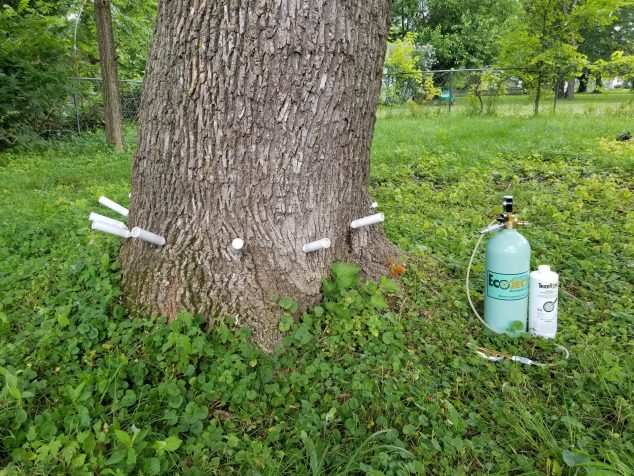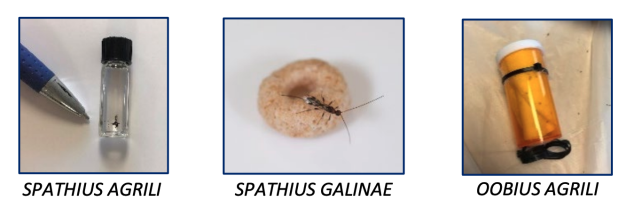Managing Ash
As EAB spreads, the widespread death of ash trees will be costly and result in dysfunctional ecosystems. Regardless of whether EAB has reached your area, it is recommended that municipalities, conservation organizations, and private landowners develop ash management plans. Many municipalities in Maine already have EAB response plans so we recommend that you get in contact with your local regulators for advice and additional resources. Here is an example of a Municipal EAB Management plan in Maine.
As another model, check out the St. Regis Mohawk Tribe’s Community Response Plan to EAB to understand the complexity and possibilities of ash management from the perspective of one Indigenous community.
There are numerous ways to manage ash in the face of EAB and climate change. There is no one size fits all approach, and engaging in multiple types of management, such as seed collection and insecticide treatment, may be necessary. As a starting point, you can review these Ten Recommendations for Managing Ash by the Forest Stewards Guild.
Insecticide treatments
Insecticide treatments can save in the long term on removal costs and preserve seed-bearing trees. Check out these resources for more information:
- Insecticide Options for Protecting Ash Trees from Emerald Ash Borer by the North Central IPM center
- For Homeowners: Ash Treatment Guide (PDF) by the State of Maine
- Organic options are available, though they are less effective and more expensive.
Please note that it is not known whether trees that have been treated with insecticides can be safely used by basketmakers.


Biological controls
The Maine Forest Service (MFS) cooperates with USDA Animal and Plant Health Inspection Service (APHIS) in a biological control effort to manage emerald ash borer (EAB). USDA labs provide three types of stingless wasps, or parasitoids, that will attack either EAB larvae or eggs. Like EAB, these insects are native to Asia. They specialize in attacking EAB and help reduce its numbers. MFS is looking for more sites to release these biological controls agents. Read more about this effort here, or USDA’s Q&A about these biocontrols here.
Retaining ash in the forest
Maintaining a living seed bank of ash trees will guarantee that ash can be regenerated in the forest after the initial sweep of EAB. The EAB guide for Maine Forest Managers (Available for download on the State’s EAB Resource page) recommends maintaining overstory ash trees in order to promote ash regeneration and monitor for resistant ash.
